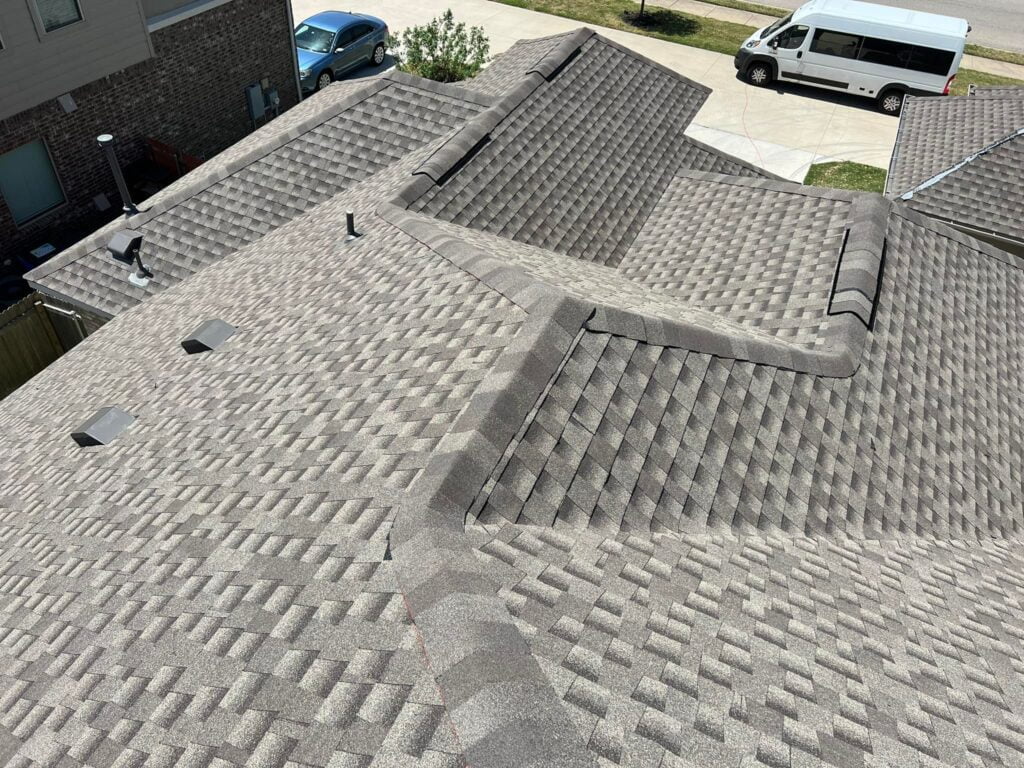

Texas Heat Effects On Your Roof – Texas Roofing Services
Texans are no strangers to harsh summer Texas heat. Unfortunately, our roofs can’t get out of the sun. This makes routine inspections and Texas Roofing Services especially important. With a watchful eye, homeowners can catch signs of roof degradation, thermal shock, and humidity damage. This gives homeowners time to step in with ventilation, repairs, and dehumidifiers to halt or reverse any heat-related damage before it is damaged beyond repair.
What is roof degradation?
Roof degradation is caused by extended exposure to direct sunlight. This can compromise your roofing material and may result in shingles buckling, eroding, and peeling back. This then exposes the wood beneath the shingles, leaving it vulnerable to rain. What roofs are susceptible to roof degradation? Older roofs. When it is time to replace your roof? If your roof has been up for over 15 years and you’re noticing balding. Moreover, Try to replace it before the heat of the summer months sets in.
SIGNS OF HEAT-DAMAGED ROOFING
There are a few tell-tale signs your roof has suffered from heat damage. Watch out for the following:
- Curling shingles
- Deteriorating or balding shingles
- Peeling
- Buckling
- Eroding
Once you begin to notice these signs of damage it’s best to call in the pros to look into possible repairs or replacement options.
Heat-related threats to Roofing
 Heat-related threats to the roof are extremely common and can be one of the leading causes of roof damage. Between the increase in humidity that comes with the summer months and constant exposure to sunlight, the roof can experience a decrease in its lifespan during this timeframe.
Heat-related threats to the roof are extremely common and can be one of the leading causes of roof damage. Between the increase in humidity that comes with the summer months and constant exposure to sunlight, the roof can experience a decrease in its lifespan during this timeframe.
ANGLE OF SLOPE
The slope of your home can open your roof up to more extensive heat damage. This can not only lower the lifespan of your roof but can also cause heat damage more quickly. Why? With a lower slope to your roof, a large section of your roof is exposed to the sun for longer periods of time. In this case, a higher slope is a better slope.
UV RAYS
In the summer months, the sun is typically closer to the Earth. This increases the number of UV rays the roof has to fight off throughout the day. Direct exposure to sunlight can age the material of shingles, causing them to peel or erode. Tile roofs will typically not absorb heat as well and allow for the heat to “bounce” off the house.
THERMAL SHOCK
Thermal shock occurs when the roofing system expands and contracts due to constant heating and cooling. The more this happens, the more physical strain is put onto the roof, decreasing its lifespan of it. Those with older roofing systems can even expect cracks and splits from thermal shock.
Does high humidity affect roofing?
 Those in high-humidity areas can expect an even harder time when the summer comes around. Hot and humid air can cause condensation to form underneath the roofing system, most commonly in shingles. Eventually, this will begin to cause water damage.
Those in high-humidity areas can expect an even harder time when the summer comes around. Hot and humid air can cause condensation to form underneath the roofing system, most commonly in shingles. Eventually, this will begin to cause water damage.
SIGNS OF HUMIDITY-DAMAGED ROOFING - NEED FOR TEXAS ROOFING SERVICES
The more cracks and splits you start to see in the roof, the more likely this is occurring from high humidity damage. The process of heating and cooling from the water underneath the roof can cause this to happen. If you start to notice leaks or a water-damaged ceiling, this can also be a sign of humidity damage.
How can I protect my roof from the heat?
Getting a “cool roof” paint for your older roofing system can help in the short run. These paints are made with special white or silver paints that are designed to reflect sunlight away from the house rather than absorb it. If your roof is easily accessible, the idea of a roof garden is not a bad idea either. Keep in mind that not all roofs can support this, so check with a professional first.
How to protect your roof from heat damage? Texas Roofing Services
 Besides regular inspections, homeowners can take additional measures to protect their roofs from heat damage during harsh Florida summers. We recommend you invest in any repairs soon after problems are uncovered, even if it seems insignificant. You should also invest in proper roof ventilation designed to help your roof stay in tip-top condition despite the weather.
Besides regular inspections, homeowners can take additional measures to protect their roofs from heat damage during harsh Florida summers. We recommend you invest in any repairs soon after problems are uncovered, even if it seems insignificant. You should also invest in proper roof ventilation designed to help your roof stay in tip-top condition despite the weather.
REPAIRS
Tackling repairs promptly can reduce the potential for larger problems to arise. Contact a trusted roofing professional if you are concerned about a potential problem with your roof. Your roof protects your home and your family, making it an investment worth maintaining. While it may seem like a hassle or wasted money, prompt repairs will save you from a much larger (and much more expensive) repair later on.
ROOF VENTILATION
Roofs can have intake vents and exhaust vents installed. These are used to protect homes from damage caused by trapped heat, moisture, and mold. Without vents, summer months can make homes' AC overwork and can end up hurting shingles in particular.
How routine inspection &can improve roof longevity?
Having your roof regularly inspected by a professional can help you catch small problems before they come to large ones. This means a longer lifespan for your roof and more value for your investment. Lastly, at some point, you will need a new roof, even with maintenance and regular protection. Contact us for a custom quote if your roof is ready to be retired.
Need a new roof? Contact us for a free estimate and Texas Roofing Services




